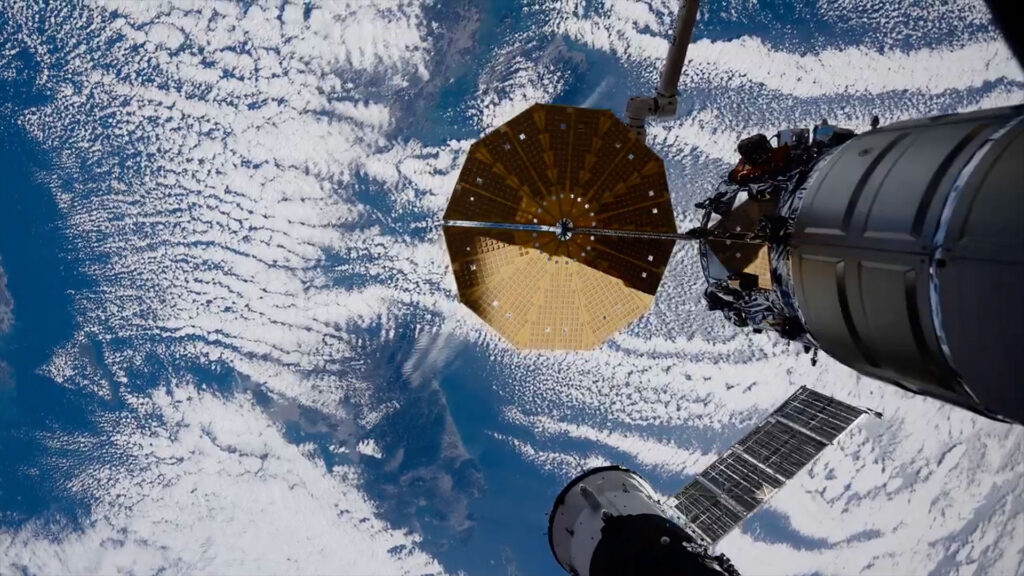Now Reading: Smithsonian Planetarium star projector review
-
01
Smithsonian Planetarium star projector review
Smithsonian Planetarium star projector review
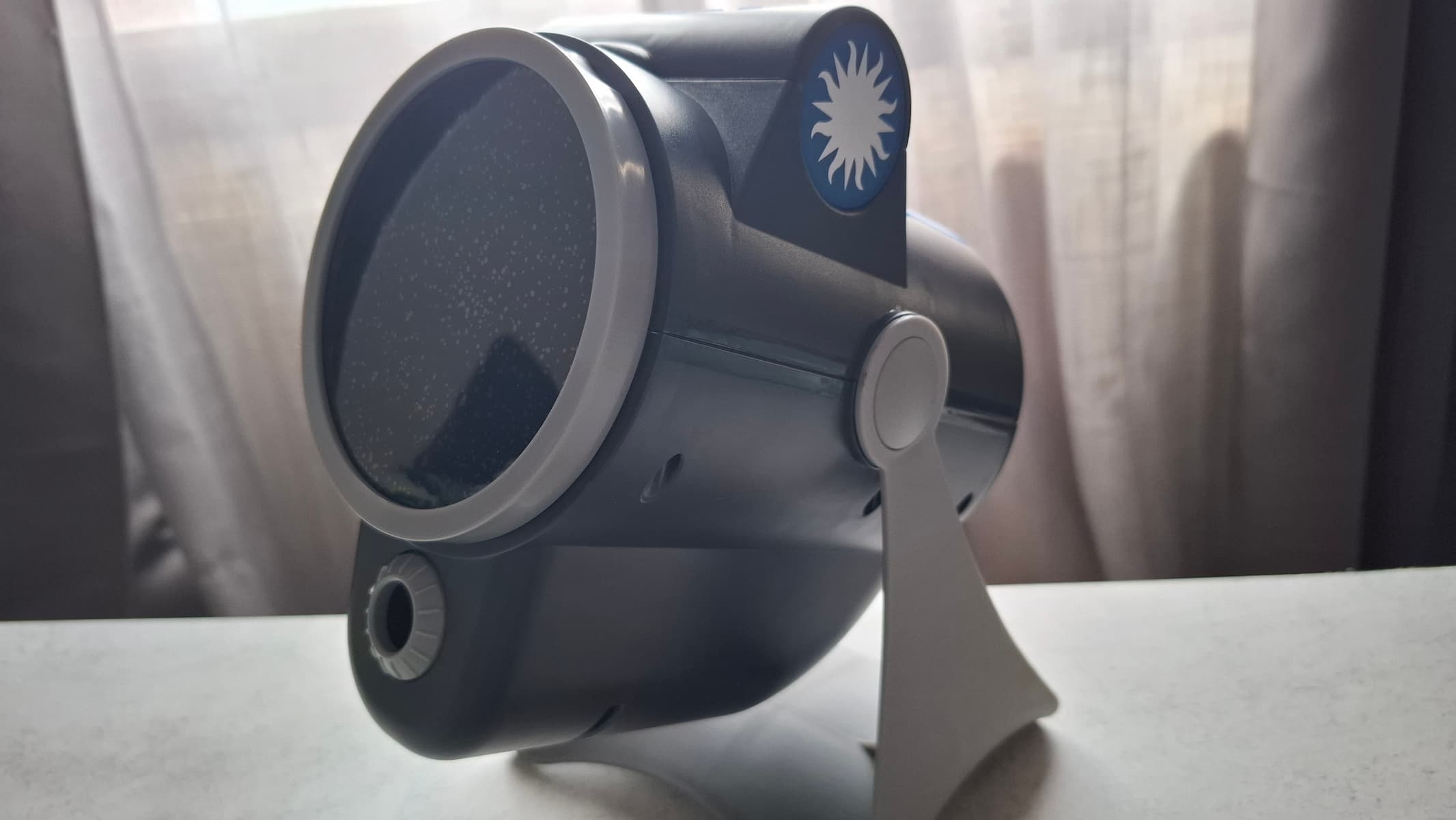
Specification
Size: 10 x 7 x 10 inches
Weight: 1.9 lbs
Bulb Type: LED
Laser: No
Control: On unit only
Rotation: Yes
Sleep timer: Yes
Speaker: No
With a familiar brand behind it, the Smithsonian Planetarium Projector is going to be an attractive choice if you’re looking for star projectors for kids. It’s chunky, it’s easy to use, and it offers scientific images rather than random pretty patterns.
The “STEM” logo on the box seals it as an educational toy rather than a fun light — and while we don’t think it’s one of the absolute best star projectors you can buy, it is a solid choice, especially given its price.
The Smithsonian Planetarium Projector typically retails for $39.99, but there’s often a discount available, so you’re not going to break the bank by picking this up. With its interchangeable disks, there are 24 scientific images to display, featuring planets, moons, the sun, a Helix Nebula, the ISS and more. Thanks to having a dual projector function, you can display these images by themselves or accompanied by a blanket of stars.
It’s these stars that let the projector down somewhat, though: Don’t expect realistic-looking constellations — instead, you’ll get a muddy ceiling of blue dots. It’s a relaxing enough image, sure, but it ruins the realism offered by the other images. Still, given the asking price of the projector, it’s hard to mind too much.
Smithsonian Planetarium Projector review: Design
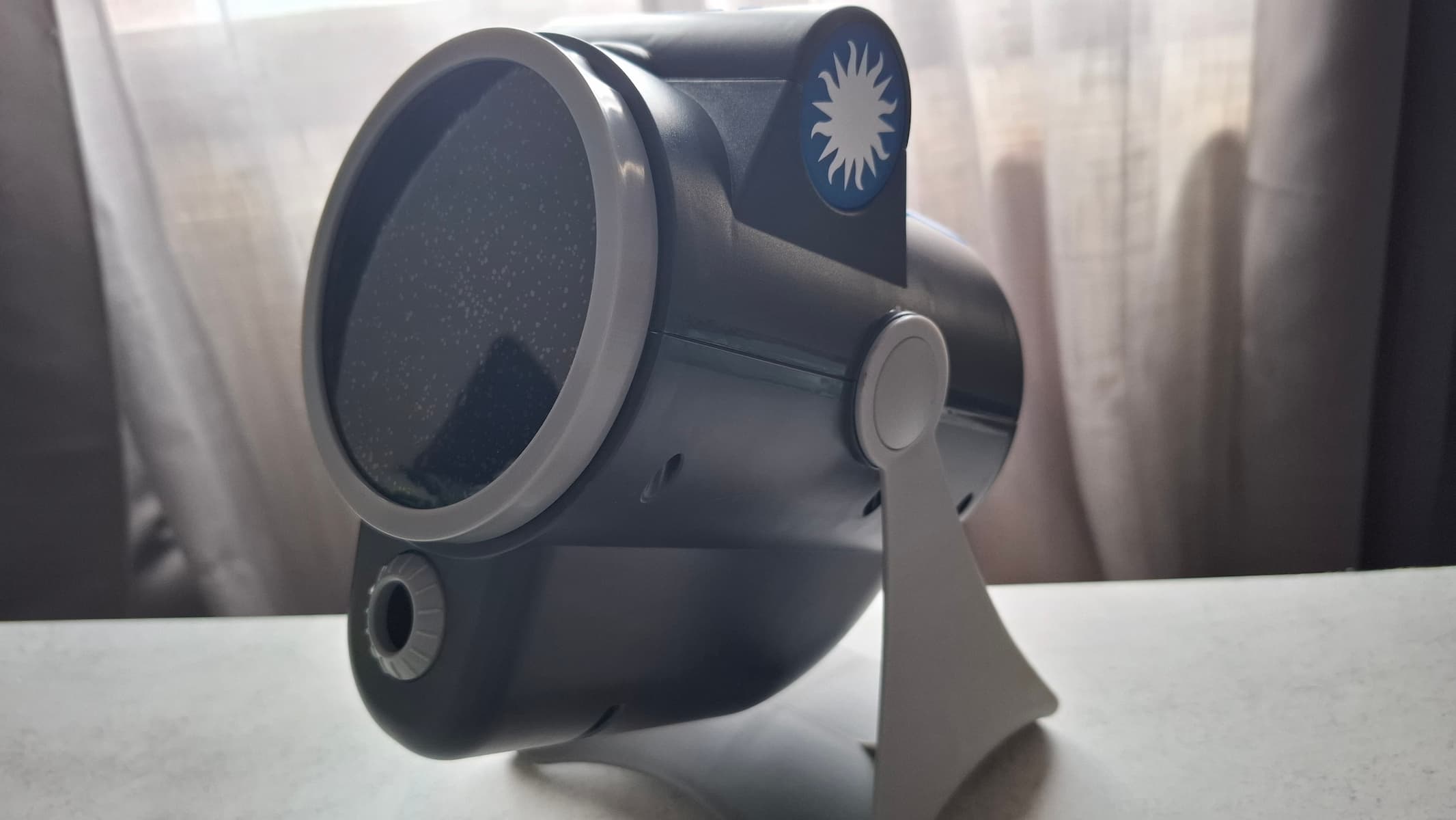
- Chunky, solid design
- Easy to use
The Smithsonian Planetarium Projector is larger than most other star projectors we’ve tested, but this chunkiness makes it ideal for children. It’s solid enough, and with just three buttons on the side of the unit, it’s very easy to use.
Out of the box, the projector comes in two parts: The actual projection unit and the stand. The pieces need clipping together, and once the stand is on, it will be difficult to remove without breaking it, so putting it neatly back in the box isn’t really an option.
There’s a hatch on the top of the projector that can be opened up to store the projection disks inside — a handy feature which means you can keep them safe. The disks are quite small, so under the charge of children, they’re easily lost and almost impossible to replace.
Smithsonian Planetarium Projector review: Performance
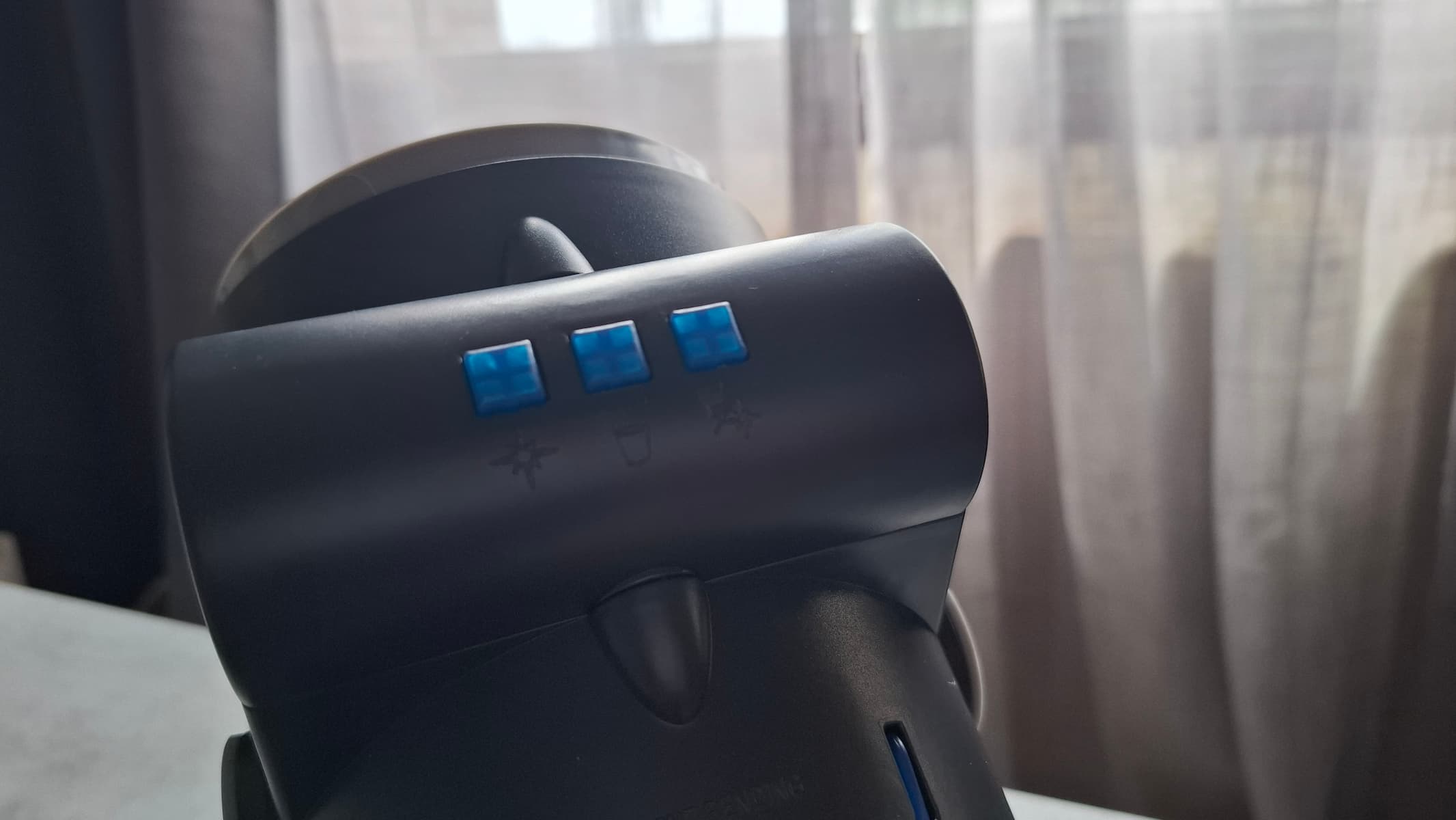
- Interchangeable disks offer up 24 individual space-themed images
- The actual star projector is muddy and disappointing
- Not the brightest projections
The Smithsonian Planetarium Projector is technically two projectors in one. The smallest of the two projects images from the disks, while the largest projects a series of stars onto the wall or ceiling it’s pointed at.
The star projector has a decent reach, but the stars — a series of blue dots — are rather dull and blurry, and don’t capture the feeling of the night sky. It’s a far cry from the sharp, detailed images of the Northern Hemisphere provided by the likes of the Sega Toys Homestar Classic.
Considering the low price of the Smithsonian Planetarium Projector, it would be unfair to expect anything of that caliber — it’s at least an improvement over the tacky green laser stars found in something like the Juzihao Star Projector.
It’s the smallest projector that’s the main draw here: The one that projects images from the interchangeable disks. Here you can see clear, sharp images of planets, moons and more celestial objects, along with man-made constructions like the ISS and moon buggies. They’re small projections, unfortunately, but used in conjunction with the stars can provide pleasant imagery. Their realism is what’s most attractive, though — using this projector is a great way to teach children about space.
Smithsonian Planetarium Projector review: Functionality
- No mains/USB power — battery only
- Nightlight function with auto shut-off
The functionality of the Smithsonian Planetarium Projector is limited. Outside of its projection functions, it doesn’t have any extra bells and whistles: There’s no built-in speaker, it doesn’t have fancy RGB lighting and no programmable sleep timer. It does, however, have an auto-shutoff function, so if you wish to use the projector as a nightlight, it will turn itself off after a time.
The main thing to keep in mind is that this projector doesn’t have mains/USB power: It requires three AAA batteries, which aren’t included. It’s handy as you don’t need to place it near a power outlet, but it does mean you’ll need to replace them from time to time. Of course, how long they last will depend on how often you use the projector and how you use it. Using both the star projector and disk projector will use more power than just using one by itself, for instance.
Should you buy the Smithsonian Planetarium Projector?
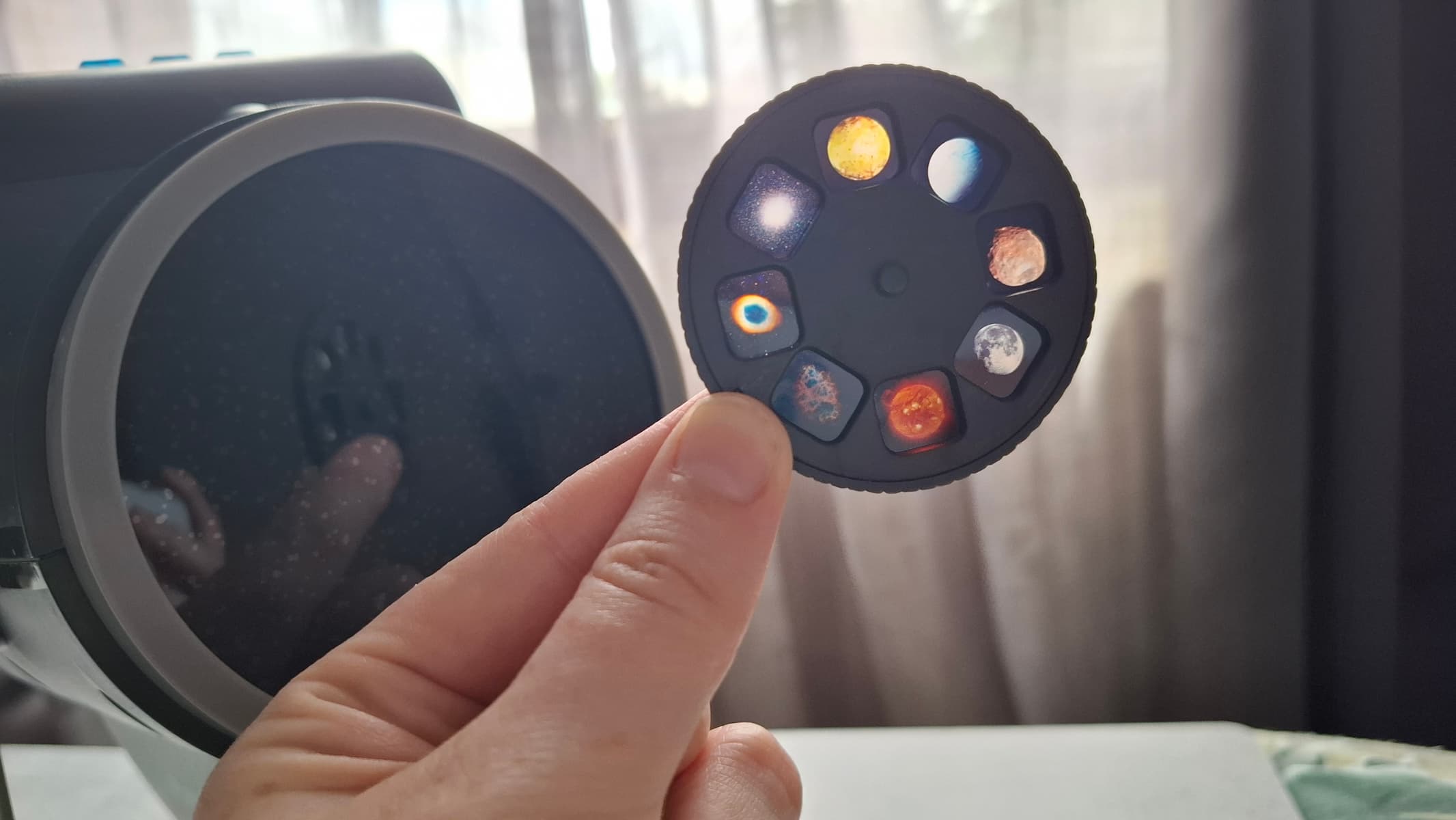
If you’re buying for kids, we think the Smithsonian Planetarium Projector is a solid choice. The two separate projectors give it a decent range of functionality, and the 24 interchangeable realistic images are a great way to teach children about space. The only downside is the blue stars, which do hinder the experience.
We do, however, think the Hommkiety Galaxy Projector is a much better choice if you want something realistic and with interchangeable disks. The images here are much bigger, more colourful and genuinely impressive. It isn’t much more expensive than the Smithsonian Planetarium Projector, either.
Stay Informed With the Latest & Most Important News
Previous Post
Next Post
-
 012024 in Review: Highlights from NASA in Silicon Valley
012024 in Review: Highlights from NASA in Silicon Valley -
 02Panasonic Leica Summilux DG 15mm f/1.7 ASPH review
02Panasonic Leica Summilux DG 15mm f/1.7 ASPH review -
 03How New NASA, India Earth Satellite NISAR Will See Earth
03How New NASA, India Earth Satellite NISAR Will See Earth -
 04And Thus Begins A New Year For Life On Earth
04And Thus Begins A New Year For Life On Earth -
 05Astronomy Activation Ambassadors: A New Era
05Astronomy Activation Ambassadors: A New Era -
06SpaceX launch surge helps set new global launch record in 2024
-
 07From Polymerization-Enabled Folding and Assembly to Chemical Evolution: Key Processes for Emergence of Functional Polymers in the Origin of Life
07From Polymerization-Enabled Folding and Assembly to Chemical Evolution: Key Processes for Emergence of Functional Polymers in the Origin of Life












